#vertical agriculture
Text
Why BG Bio is the Top Choice for Hydroponic Fertilization in 2024

Hydroponics, the method of growing plants without soil, has seen a significant rise in popularity over recent years. As more individuals and businesses turn to this efficient and sustainable form of agriculture, the demand for high-quality hydroponic fertilizers has also increased. Among the many options available, BG Bio has emerged as the top choice for hydroponic fertilization in 2024. Here's why BG Bio stands out in the competitive world of hydroponic nutrients.
1. Superior Nutrient Formulation
One of the primary reasons BG Bio is favored by hydroponic growers is its superior nutrient formulation. Hydroponic plants require a precise balance of macro and micronutrients to thrive, and BG Bio has perfected this balance. Their fertilizers are meticulously crafted to ensure that plants receive all the essential nutrients they need for optimal growth. This includes the right amounts of nitrogen, phosphorus, potassium, calcium, magnesium, and sulfur, as well as trace elements like iron, manganese, zinc, copper, molybdenum, and boron.
2. Advanced Bioavailability
BG Bio's fertilizers are designed for maximum bioavailability. This means that the nutrients are in forms that plants can absorb and utilize quickly and efficiently. The advanced chelation technology used in BG Bio products ensures that nutrients remain soluble and available to plants, even in the complex environment of a hydroponic system. This leads to faster nutrient uptake, healthier plants, and higher yields.
3. Sustainable and Eco-Friendly
In 2024, sustainability is a key consideration for many growers, and BG Bio excels in this area. Their fertilizers are formulated with sustainability in mind, using environmentally friendly ingredients and production processes. BG Bio is committed to reducing the environmental impact of agriculture by providing products that are not only effective but also gentle on the planet. This includes using renewable resources and minimizing waste and emissions in their manufacturing process.
4. Tailored Solutions for Different Crops
Different plants have different nutritional needs, and BG Bio recognizes this. They offer a range of specialized fertilizers tailored to the specific requirements of various crops. Whether you are growing leafy greens, fruits, flowers, or herbs, BG Bio has a product designed to meet the unique needs of your plants. This targeted approach ensures that each plant type receives the optimal nutrients for its growth stage and specific requirements, leading to better results.
5. User-Friendly Products
BG Bio understands that not all hydroponic growers are experts, which is why they have made their products user-friendly. Clear instructions, easy-to-use formulations, and comprehensive support materials make it simple for even beginners to achieve great results. BG Bio also provides excellent customer support, offering guidance and troubleshooting to help growers maximize the benefits of their products.
6. Proven Results
The efficacy of BG Bio's products is backed by extensive research and real-world results. Numerous growers, both amateur and professional, have reported significant improvements in plant health, growth rates, and yields after switching to BG Bio fertilizers. The company’s commitment to continuous improvement and innovation means that their products are always at the cutting edge of hydroponic science.
7. Cost-Effective Solutions
While high-quality hydroponic fertilizers can be an investment, BG Bio offers cost-effective solutions that deliver excellent value for money. Their products are concentrated and highly effective, meaning that a little goes a long way. This efficiency not only saves money in the long run but also reduces the frequency of purchasing and shipping, contributing to lower overall costs.
8. Industry Recognition and Awards
BG Bio has received numerous accolades and industry awards for their innovative and effective products. These recognitions are a testament to their commitment to quality and excellence. Being recognized by industry experts and peers reinforces BG Bio's position as a leader in hydroponic fertilization.
9. Commitment to Research and Development
BG Bio invests heavily in research and development to stay ahead of the curve in hydroponic fertilization. Their dedicated R&D team constantly explores new technologies and methodologies to improve their products. This ongoing commitment to innovation ensures that BG Bio remains at the forefront of the industry, providing growers with the latest and most effective solutions.
10. Community and Educational Support
BG Bio is more than just a fertilizer company; they are a valuable resource for the hydroponic community. They offer a wealth of educational materials, including articles, tutorials, and webinars, to help growers of all levels improve their techniques and achieve better results. BG Bio’s active engagement with the hydroponic community fosters a sense of collaboration and knowledge-sharing that benefits everyone involved.
Conclusion
In conclusion, BG Bio stands out as the top choice for hydroponic fertilization in 2024 due to its superior nutrient formulation, advanced bioavailability, commitment to sustainability, tailored solutions, user-friendly products, proven results, cost-effectiveness, industry recognition, dedication to research and development, and strong community support. Whether you are a novice grower or a seasoned professional, BG Bio offers the high-quality, reliable, and effective fertilization solutions you need to succeed in the world of hydroponics. With BG Bio, you can be confident that you are giving your plants the best possible foundation for healthy, robust growth.
#hydroponic farming#hydroponics system#hydroponic nutrients#hydroponic#hydroponic farming#hydroponic farming system#hydroponic agriculture#hydroponic liquid fertilizer#hydroponic solutions#liquid plant food for hydroponics#fertilizer for hydroponic plants#hydroponic cultivation#vertical agriculture farming#vertical farming system#vertical agriculture#natural plant fertilizer#organic fertilizer#organic liquid plant food#organic plant fertilizer#liquid nutrients for plants#grow nutrients#plant nutrients#organic nutrients#organic plant nutrients
0 notes
Text

. . . | uwhe-arts
#harvesting of sunflowers#harvest season#september#photographers on tumblr#uwhe-arts#observer#original photographers#original creators#agriculture#nature#explore#vertical#photography#uwhearts#landscape#dramatic#Loss of habitat#late summer#countryside#field
189 notes
·
View notes
Text
"Arlington, Virginia is like a gateway to the city of Washington D.C. Part of the Metro line, but across the Potomac, it’s nevertheless a busy area and not the kind of place you’d expect to be able to get minutes-old, farm-fresh produce.
But Area 2 Farms is growing greens, herbs, and root vegetables in a vertical farm thanks to the dearth of traditional office tenants. With high-rise office space remaining vacant even after the end of the pandemic, landlords are open to ideas.
Jackie Potter and Tyler Baras pitched the idea of an indoor farm and it was obviously a good one because Area 2 is already well-established in the Arlington area such that they offer subscription delivery of fresh veggies to fellow urbanites starting at $40 per week.
Area 2 Farms uses a sophisticated conveyor belt system called Silo to cut down on the more laborious hours of indoor farming. It’s not a hydroponic system—there is soil inside Area 2 Farms which means they can grow root vegetables like potatoes, carrots, and radishes.
When executed correctly, vertical farming can produce as much as traditional farming but with a lot less space, and no concern over weather or pests. Obviously as well it can be done in the center of a city, where land is at a premium...
“Cities are changing every day,” Potter tells Modern Farmer. “There’s a really great economic opportunity as well. Our farms create new green jobs, they beautify spaces and provide fresh food to local communities. That’s something that’s really precious.”"
-via Good News Network, 7/14/23
#virginia#arlington#farming#vertical farming#area 2 farms#vegetables#fresh fruit#fresh vegetables#united states#good news#hope#hope posting#pandemic#rent#sustainable agriculture#organic
326 notes
·
View notes
Text
youtube
Meet Linda Kathambi, a pioneering farmer who has embraced the future of urban agriculture through hydroponic and vertical farming systems.
8 notes
·
View notes
Text
Plants grown in aeroponic systems tend to grow faster and produce higher yields due to the efficient delivery of nutrients and oxygen directly to the roots.
2 notes
·
View notes
Text
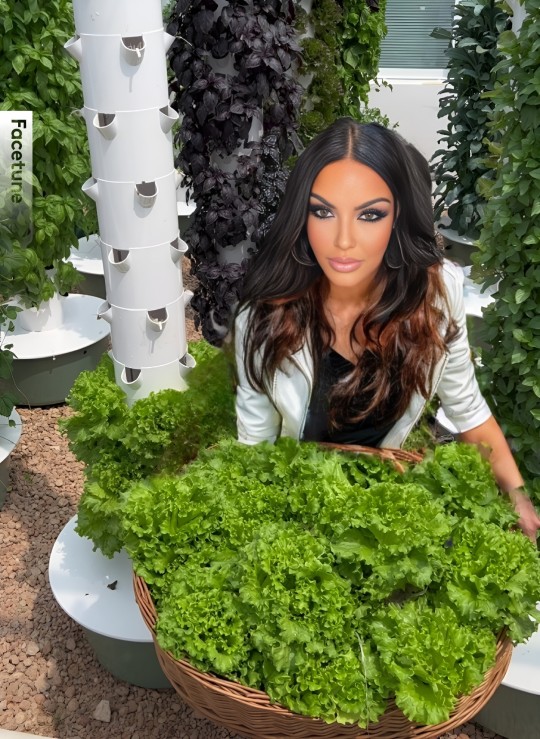
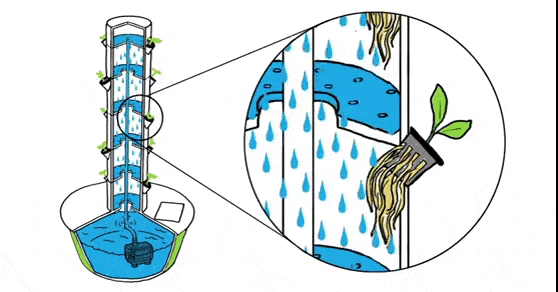
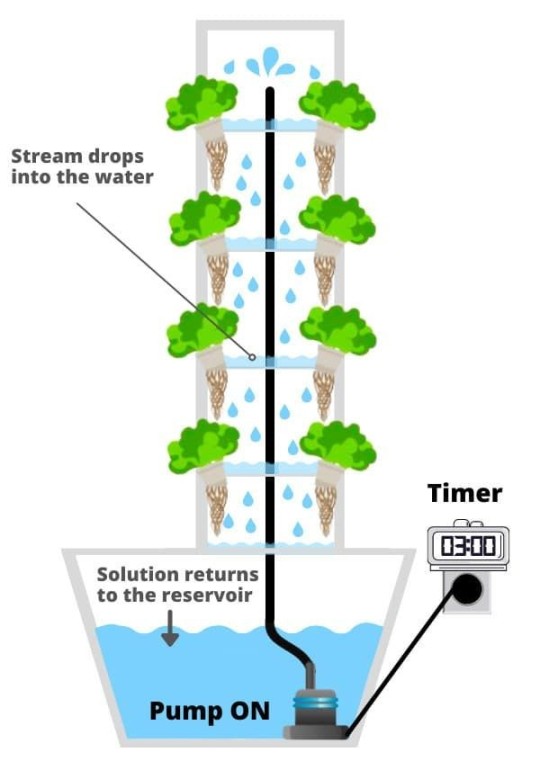

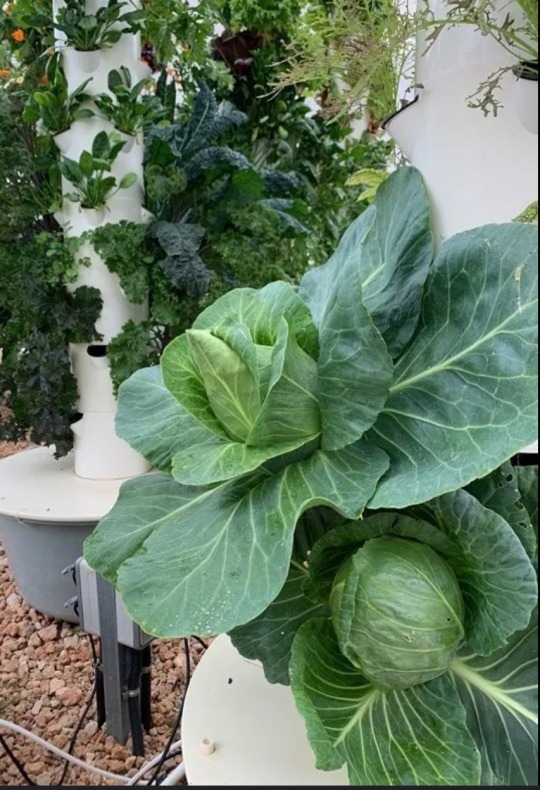
#creative inspiration#education#vertical farming#aquaculture#aquaponics#all natural#science#entrepreneur#organic agriculture#organic farming#self love#herbal remedies#inspiration#love#shrimp#garden#sustainability#farm#farming#sale#growyourbusiness#grow food#knowledge#nature#earth
2 notes
·
View notes
Text
Liquid Storage Tank Manufacturers in India

Find excellence in liquid storage with leading Liquid Storage Tank Manufacturers in India. From corrosive chemicals to potable water, tanks are engineered for durability and safety. With a commitment to superior craftsmanship, ensure compliance with industry standards and deliver innovative storage solutions. Expertise to provide customizable, efficient, and cost-effective liquid storage tanks that safeguard your valuable liquids. Elevate your storage capabilities with Bhupati Engineering's advanced solutions, setting new benchmarks for reliability and performance in the liquid storage industry.
#Liquid Storage Tank Manufacturers in India#Top Liquid Storage Tank Manufacturers in India#Best Liquid Storage Tank Manufacturers in India#Liquid Storage Tank Manufacturers#Liquid Storage Tanks#Liquid Storage Tank#Storage Solution Providers#Agricultural Storage Tanks#Material Handling Equipment Manufacturers & Suppliers#Grain Storage Silo Manufacturers in india#Industrial Material Handling Equipment Manufacturers in india#Vertical Bucket Elevator Manufacturers in India#"#Conveyor Belt Manufacturers in India
2 notes
·
View notes
Text
High-rise Pig Farming in China

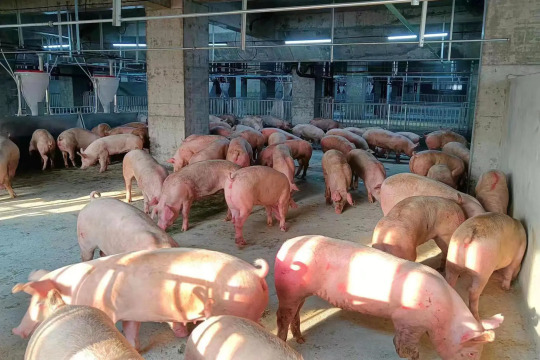



A 36-story pig farm in China.
7 notes
·
View notes
Text
ChatGPT in the agricultural sector: advantages and opportunities
Artificial intelligence technologies are increasingly being used in different sectors of the economy, including agriculture. One of the promising tools is ChatGPT, a generative artificial intelligence model that can be used to automate a number of processes in the agricultural sector.
In this article, we will look at how ChatGPT can be used in the agricultural sector with its advantages and possibilities.

So far, ChatGPT cannot generate images, so we made this image using Kandinsky 2.1. According to the neural network, the farmer of the future manages their farm using artificial intelligence.
ChatGPT technology overview
ChatGPT is an innovative solution to develop a chatbot that can participate in a dialogue, search for errors in programming code, write poetry and scripts, and even argue. We will not go into technical details, but if you are interested, you can read about them here or here. Our goal is to consider the capabilities of this technology in the agricultural sector.
ChatGPT was trained using text selection from the web and Reinforcement Learning from Human Feedback. The neural network underwent multiple retraining sessions to make its answers even more accurate.
The main goal of developing ChatGPT was to make artificial intelligence as easy to use, correct and ‘human’ as possible. The system provides ample opportunities to automate various processes, reduce errors and improve work efficiency.
ChatGPT has many features and skills:
• Generating phrases, sentences or texts to create content for websites or advertisements.
• Requesting answers based on the input information on which the neural network was trained.
• Solving problems, for example, by formulating a specific problem and suggesting possible solutions.
• Generating various types of content, including advertisements, social media posts, news articles and other texts.
• Completing sentences and phrases automatically in applications when the user enters a text into a search box or writes an email.
• Creating various kinds of chatbots that can help in customer service: answering questions, learning about customer preferences or making recommendations.
• Extracting information from texts, as well as identifying the most important information in the text.
These are just some of the features of ChatGPT and similar applications. Developers can use this technology to develop innovative applications that not only save time and resources, but also provide a deeper understanding of user needs and preferences.
How AI is being used in agriculture today
Artificial intelligence is becoming more popular and coming into use in the agricultural sector. Today, artificial intelligence technologies offer an opportunity to solve many problems that arise in the agricultural sector, from increasing yields to reducing production costs.
SmartAgro

SmartAGRO Agroanalytics interface
One of the companies using artificial intelligence to improve production is SmartAGRO, a Russian IT company specializing in the development and implementation of intelligent systems to solve complex problems in the industrial agriculture.
Their core product, Agroanalytics-IoT, automates up to 90% of the industry’s business processes, which significantly reduces crop losses.
The company uses artificial intelligence algorithms to predict the harvest throughout the growing season, so that it has the opportunity to adjust processes if something goes wrong.
SR Data
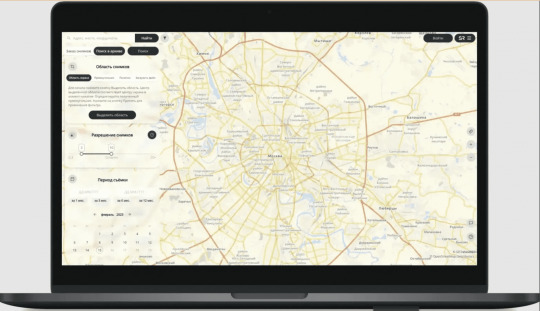
SR Data solution that allows ordering satellite images (photographs of agricultural land)
Another developer of intelligent solutions in the agricultural sector is SR Data, a private Russian tech company that provides high and ultra-high resolution space images and analyzes them using mathematical modeling and artificial intelligence systems. In addition to optical images, the company uses radar images to minimize the negative impact of weather on the quality of information extracted from images. This solution is particularly useful in the agricultural sector as it allows specialists to receive high-quality data exactly when it is needed. However, the company cannot calculate vegetation indexes from these images directly, so it uses AI algorithms to predict those.
Autonomous Greenhouse Challenge

Vertical farming
A good example of the use of artificial intelligence in the agricultural sector are automated greenhouses. Using up to date machine learning and data analysis systems, AI can help optimize plant management processes to boost production and reduce costs. The solution was developed in 2022 by a team from Russian Agricultural Bank and Moscow Institute of Physics and Technology as part of the Autonomous Greenhouse Challenge.
Analyzing data from sensors and monitors in a greenhouse, including light, humidity, temperature and other parameters, AI algorithms determined the optimal conditions for plant growth. After that, the system automatically controlled and adjusted environmental parameters. This greenhouse management system helps specialists optimize plant growth conditions and get higher yield.
These examples prove the benefits of using AI in the agricultural sector. However, ChatGPT is not a standard AI algorithm and its capabilities are not so obvious. Let us try to find them out.
We asked ChatGPT about its role in agriculture, and this is what we got:
• Data reporting automation and documentation generation. ChatGPT can make automatic reports on crops and harvest, generate accounting reports and other documents significantly reducing the time and resources required to perform these tasks.
• Improved communication between farmers and consumers. ChatGPT helps create chatbots to improve communication between farmers and consumers. It enables customers to ask questions about growing methods and product quality, and farmers — to get feedback on their products and services, which will help improve the quality of the products and transform the approach to production.
• Weather forecasting and vegetation management. ChatGPT algorithms can be used to obtain weather reports and manage the vegetation. This requires collecting data on weather, soil moisture, pests, and other parameters, and then using these data to develop models that help predict the best time to plant or harvest, as well as the most effective pest control methods.
• Pattern and organic material recognition. ChatGPT algorithms can be used for pattern and organic material recognition, which helps determine which labels are needed for each package and which shipping method is the best. Specialists can also use ChatGPT to detect irrigation system leaks and other technical problems.
Our opinion on using ChatGPT in agriculture
The previous section covers various use cases for ChatGPT in agriculture, which it has generated itself. However, some of them require fine-tuning the neural network or using it as an addition to the existing instruments.
The application that we see as the most realistic is to improve communication between farmers and consumers. Chatbots providing communication between farmers and consumers will enable buyers to ask questions about growing methods and product quality, and farmers — to get feedback on their products and services, which will help improve the quality of the products and transform the approach to production.
For example, we asked ChatGPT how to choose apples:

We also asked it about safety of phosphate fertilizers:
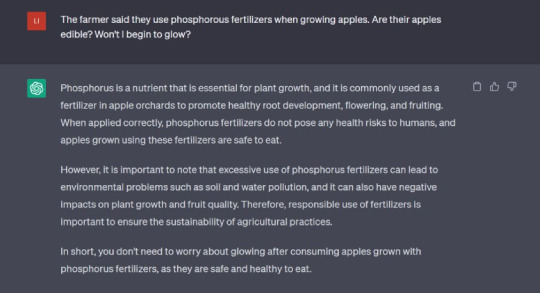
ChatGPT successfully answered our questions and helped choose and buy apples from the farm, which proved its usefulness.
What others think about ChatGPT applicability in the agricultural sector
To find more ideas about the possibilities of using ChatGPT in the agricultural sector, we conducted a survey and got the following results:
• Most people are suspicious about ChatGPT technology because of the possible false information it provides, its lack of responsibility and the absence of direct interaction with ‘real-world’ processes.
• Some people see the benefits of using ChatGPT in the agricultural sector. After some adjustment, the neural network can be used to create and fill out documentation. It may take the approach of an offline AI assistant that can combine data from the Internet, as in ChatGPT-plus complete with its plugins.
• There are those who have not yet figured out how the technology works and believe that the agricultural sector does not need new technologies, but needs more labor force instead.
The survey showed that the role of ChatGPT in the agricultural sector is ambiguous. Most people are skeptical about this technology, but there are those who see its benefits. The results of the survey show that the use of ChatGPT in the agricultural sector requires in-depth study.
Real case of using ChatGPT to grow potatoes
However, while some are skeptical of new technologies, others are enthusiastic about testing them. One of the recent tests is growing potatoes using ChatGPT.
You can read about this experiment in the Telegram channel of the project. ChatGPT understands user’s requests for growing seed potatoes in an aeroponic system and is calling itself a ‘professional agronomist and AI botanist’.
The neural network will provide information about nutrient mixes, watering cycles, lighting conditions, pH and EC target values, and take into account the effect of pH adjusters on the nutrient solution. If needed, it will also ask for additional information about a particular potato variety, local climate, and available resources.
ChatGPT also recognizes fertilizer requirements and requests additional information about available fertilizers.
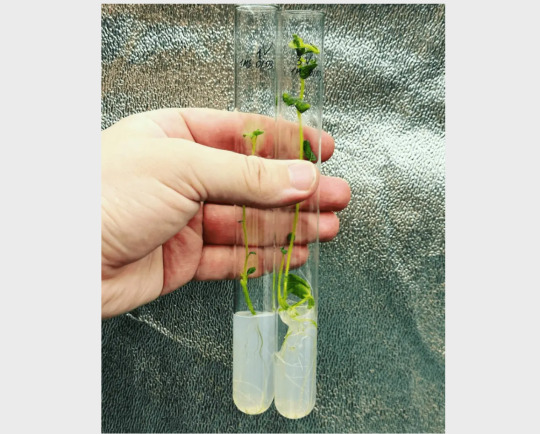
The author of the Telegram channel shows test-tube potato plants, saying that the hands in the picture will work together with AI.
The prospects of AI technology in the agricultural sector
Artificial intelligence in the agricultural sector can be a useful tool to improve product quality and increase production efficiency. AI can be used to process and analyze data, manage various processes, develop chatbots and other tools to help process automation.
ChatGPT is one of the AI systems that can be used in the agricultural sector to process and analyze text data and develop chatbots.
However, keep in mind that ChatGPT may not give reliable answers, which can impair decision making. When using a neural network, specialists need to be careful and check the information using other sources.
In addition, ChatGPT cannot be trained on a chosen database, which limits its use in some business areas. This problem can be partially solved by using open-source models, but they most likely will not be able to offer the required quality.
In general, the use of ChatGPT in the agricultural sector can improve the efficiency and productivity of the area, but requires caution and compliance with legal regulations.
2 notes
·
View notes
Text
The company I interned, Sustenir, is gonna go bankrupt, GOOD those lying arseholes deserve it
1 note
·
View note
Text
youtube
This former WWII air raid shelter has been turned into an underground farm and could be the future of farming 🥬🥕
#Earth #Environment #ClimateCrisis #NowThis
#now this earth#now this#solarpunk#farming#agriculture#wwii shelter#vertical farming#air raid shelter#Zero Carbon Vertical Farm#olivia o’brien#London#England#UK#food#produce#plants#Youtube
4 notes
·
View notes
Text
You are never going to damage the profits of major agricultural companies by simply cutting out animal products. If your goal is to destabilize the current agricultural market to make industry wide changes you should instead be focusing on creating/supporting locally made products. (I say products here because the ag industry is not limited to food.)
This is expensive for a lot of people and just downright impossible in some areas when starting out but it really is one of the number one actionable ways to become independent of major ag companies.
If you have the resources check out some local farmers markets, participate in a community garden, grow things on your own however you can, start up community networks for people to buy/trade/give whatever they have in excess, etc.
Obligatory this is not saying you can't cut out certain foods for whatever personal reason. It's just not a politically effective move if that is your actual goal.
#there will be no effective boycotts of the agricultural industry as a whole until there is an alternative firmly in place#like focusing in on some specific companies MAY work but honestly vertical integration is such a plague#it's unlikely youll be able to cut out everything they produce#(half measures can be better than nothing but typically when in conjunction with other tactics)#555
3 notes
·
View notes
Text

🌱 Vertical Farming: Revolutionizing Agriculture for a Sustainable Future! 🌍
Imagine a world where fresh, nutritious produce is grown right in the heart of our cities, using minimal space and resources. This is the promise of vertical farming, a groundbreaking agricultural technique that cultivates crops in stacked layers, often within urban environments. By utilizing indoor spaces like warehouses and high-rise buildings, vertical farming maximizes land use and boosts crop production efficiency.
One of the key benefits of vertical farming is its ability to produce food year-round, regardless of weather conditions. By controlling the environment—temperature, humidity, and light—farmers can ensure optimal growth conditions for their crops. This method also significantly reduces water usage through innovative irrigation systems and eliminates the need for harmful pesticides.
Vertical farming not only addresses the challenges of land scarcity and urbanization but also contributes to a more sustainable food system. It reduces the carbon footprint associated with transporting food over long distances and transforms unused urban spaces into green, productive areas.
Join the movement towards a greener future with vertical farming! 🌿🌆
0 notes
Text
Ideal for urban settings and small spaces, the Thump aeroponic tower garden system is easy to set up and maintain, making it perfect for growing a variety of plants, including herbs, vegetables, and flowers.
2 notes
·
View notes